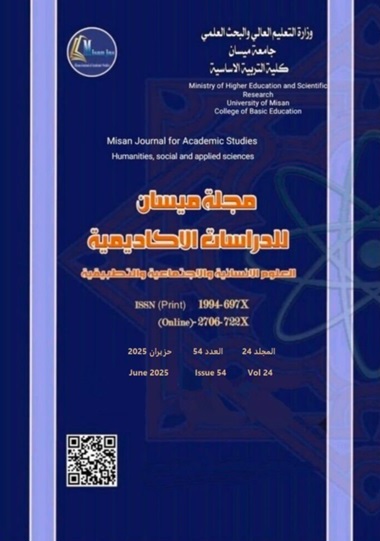Structural and Optical Properties of Copper Oxide Nanoparticles Synthesized by Chemical Precipitation Method
Abstract
Sodium bicarbonate was used as a precipitation agent and copper nitrate as a precursor in the chemical precipitation process to create copper oxide nanoparticles (CuO-NPs). After that, scanning electron microscopy (SEM), X-ray diffraction (XRD), and ultra-violet (UV) microscopy have been used for characterizing the NPs. The prepared CuO-NPs showed crystalline and nanosize XRD patterns. The 26 nm crystallite size of the CuO NPs is confirmed by Scherer's formula. According to the SEM image, the NPs have been spherical and tended of agglomerations. Copper oxide absorption spectrum at about 270nm is confirmed by the UV-visible.
Downloads
Copyright (c) 2025 (Humanities, social and applied sciences) Misan Journal of Academic Studies

This work is licensed under a Creative Commons Attribution-NonCommercial-NoDerivatives 4.0 International License.
The copyright is also the copyright of the magazine only.
All articles published in our magazine are subject to license terms
Creative Commons Attribution(CC BY-NC-ND 4.0) This license permits the content to be reproduced, redistributed and reused in whole or in part for any purpose free of charge, without any permission from the author(s), researcher or student.
Works submitted to Maysan Journal of Academic Studies for publication in the journal (CC BY-NC-ND 4.0) license terms. Where available content can be shared, distributed and replicated provided there is no commercial profit and appropriate credit must be given to the original source through sources or citations. It is mandatory to review any material used from other sources including shapes, tables, and images for re-use under the terms of the Creative Commons License (CC BY-NC-ND 4.0).Provided that there is no modification to the original content



